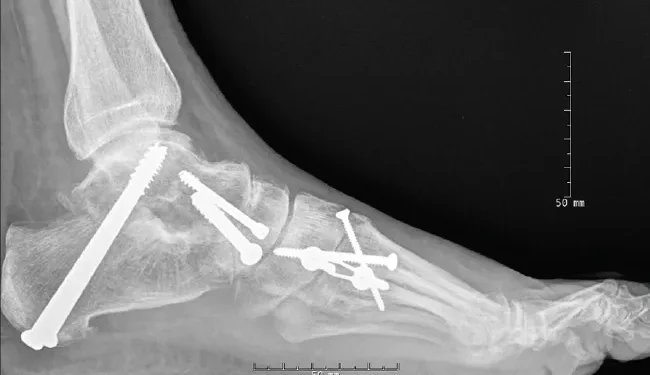Foot and ankle conditions like arthritis or injuries can be painful and limit movement. While treatments like therapy or medication help, sometimes surgery, like hindfoot fusion, is needed. This procedure fuses bones in the heel and ankle to enhance stability and reduce pain. It has benefits and risks like any surgery.
In this article, we will discuss the benefits and risks of hindfoot fusion for foot and ankle conditions in more detail.
Table of Contents
Benefits of Hindfoot Fusion
Before undergoing surgery, it’s important to go to a reputable surgeon in your local area and make an informed decision. For instance, Boise orthopedic surgeons provide advanced foot and ankle care. This includes hindfoot fusion procedures. Here are some of the potential benefits of this surgery:
Reduces Pain and Discomfort
One of the main benefits of hindfoot fusion is that it can significantly reduce pain and discomfort. By fusing bones in the heel and ankle, this procedure eliminates any movement between them, which is a common source of pain for people with foot and ankle conditions.
Improves Stability
Hindfoot fusion also improves stability by creating a solid connection between the bones in the heel and ankle. This can help with walking, running, and other activities that require weight-bearing on the foot.
Corrects Structural Issues
In some cases, hindfoot fusion can also correct structural issues in the foot and ankle. For example, if a person has malalignment or deformities in their feet due to conditions like flat feet or high arches, this surgery can help correct them and improve overall foot and ankle function.
Long-Term Solution
Unlike temporary treatment options like medication or therapy, hindfoot fusion is a long-term solution for foot and ankle conditions. It may take several months to fully recover from the surgery.
But, once the bones are fused, they will remain stable and pain-free in the long run. This can greatly improve a person’s quality of life and allow them to participate in activities they may have had to give up due to their condition.
Risks of Hindfoot Fusion
As with any surgery, there are potential risks and complications associated with hindfoot fusion. Patients need to be aware of these before deciding on the procedure. Here are some of the most common risks:
Infection
As with any surgical procedure, there is a risk of infection at the site of the incision. This can be prevented by following proper post-operative care instructions and keeping the area clean.
Nerve Damage
There is also a small risk of nerve damage during surgery. However, this is rare and can often be avoided by choosing a skilled and experienced surgeon.
Non-Union
In some cases, the bones may not fully fuse, leading to a condition called nonunion. This can result in ongoing pain and discomfort and may require additional surgery.
Continued Pain
While hindfoot fusion is intended to reduce pain, there is a chance that some patients may continue to experience pain after the procedure. This could be due to other underlying conditions or complications during the surgery.
Explore the Risks and Benefits of Hindfoot Fusion
Hindfoot fusion is a surgical procedure that can greatly benefit individuals with foot and ankle conditions. It can reduce pain, improve stability, correct structural issues, and provide long-term relief. However, as with any surgery, there are potential risks involved. Before deciding on hindfoot fusion, it’s important to consult with a trusted surgeon and thoroughly understand the benefits and risks of the procedure.
Is this article helpful? Keep reading our blog for more.


 Home
Home










